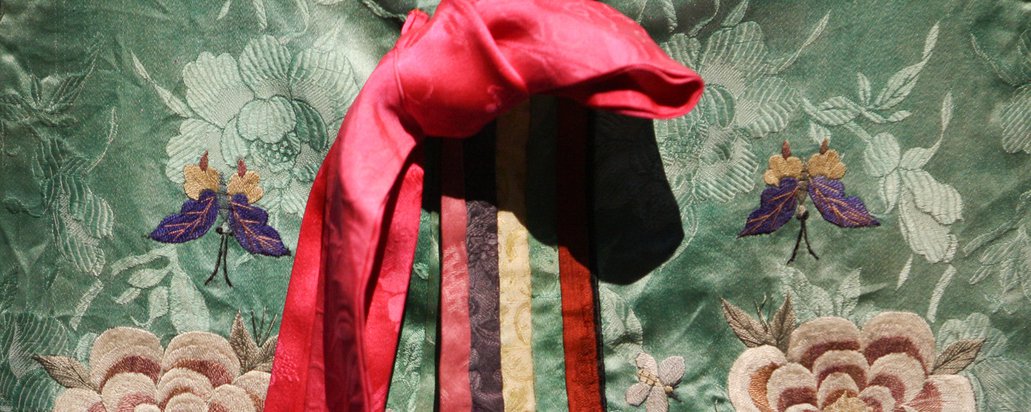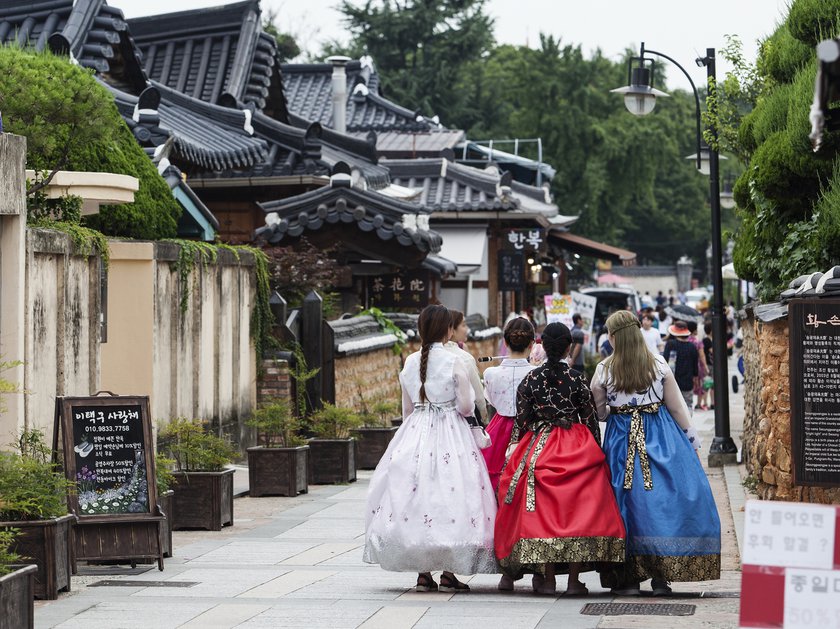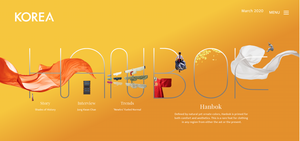History of the Hanbok

KCCUK Culture Series
We’ll be shining a spotlight on different aspects of Korean culture, from the traditional to the modern. With most people now staying at home where possible, we wish to continue sharing Korean culture with the UK community through our newsletters and social media and hope this will be a welcome distraction at such a difficult time.
Read on to discover some of the secrets behind traditional Korean clothing – known as hanbok – and how fashion has shaped Korean society through the ages.
Shades of History: Colour and Social Status
Throughout the millennia-long history of the Korean peninsula, colours have been used in fashion to demarcate royalty, court officials and other social groups.
In the Baekje Kingdom (18 B.C.-A.D. 660), the king dressed in a wide-sleeved violet garment, blue silk trousers, a white leather belt, a gold or black silk hat and black leather shoes. Baekje courtiers wore coloured belts (purple, red or blue) to distinguish their ranks.
Throughout the Goryeo (918-1392) and Joseon (1392-1910) Dynasties, violet maintained its royal status. The colour of an upper-class woman’s jeogori – a short jacket – indicated whether she had a son (navy) and a living husband (violet).
While the upper class displayed their status through bright, eye-catching colours, the traditional colour of choice for ordinary Koreans has always been white. To assume that people lacked the technique or time to dye their own garments would be inaccurate – wearing white was a conscious choice, and over time became an expression of national identity. Under Japanese colonial rule (1910-1945), when white clothing was prohibited allegedly for sanitary reasons, flouting this rule was a form of unspoken resistance against the occupying force.

The Timeless Appeal of Korean “Magic Socks”
Yosul beoseon – literally magic socks – have a very important part to play in traditional Korean fashion and are a top-selling souvenir for visitors to the country.
Dating back to the Three Kingdoms period (57 B.C. – 668 A.D.), the artistic socks enhance traditional beoseon with a variety of eye-catching colours and patterns as well as extra padding for warmth. Replaced by Western-style socks in the late 19th century, yosul beoson are now seeing a revival among both younger and older generations for their graceful design and ability to keep out the cold.
Aside from their practical function, beoseon traditionally served as a lucky charm for families, inviting in wealth and casting away evil spirits. Housewives made socks to fit each family member’s feet and collected them in a pouch decorated with auspicious flowers. Following a tradition called dongjiheonmal, a daughter-in-law would make beoseon for her husband’s family at the start of winter to wish for longevity and fertility.
Visit Korea: Hanbok Hotspots
A growing trend among visitors to Korea – many of whom have seen traditional Korean clothing in films and TV Dramas – is to rent a hanbok for the day and visit historical scenic spots for the perfect photo opportunities.
Did you know, entrance to all five palaces in Seoul is free for anyone wearing hanbok? The largest and most popular palace to visit is Gyeongbokgung, but for a more unique experience we’d also recommend Changdeokgung – make sure you book a tour of its beautiful ‘secret garden’.
For those venturing outside the capital, Jeonju Hanok Village holds annual hanbok festivals and traditional clothing can be easily rented all year round. An even more authentic historical experience can be found at the Korean Folk Village in Yongin, Gyeonggi Province, which introduces visitors to all aspects of traditional culture from farmer’s music performances to traditional wedding ceremonies, Confucian schools, bronze workshops and more. Discounts are offered to all those who arrive in hanbok…!
Courtesy of KOREA, published by the Korean Culture and Information Service (KOCIS)
Top image: hanbok at Daegu National Museum - © Korea Tourism Organization

